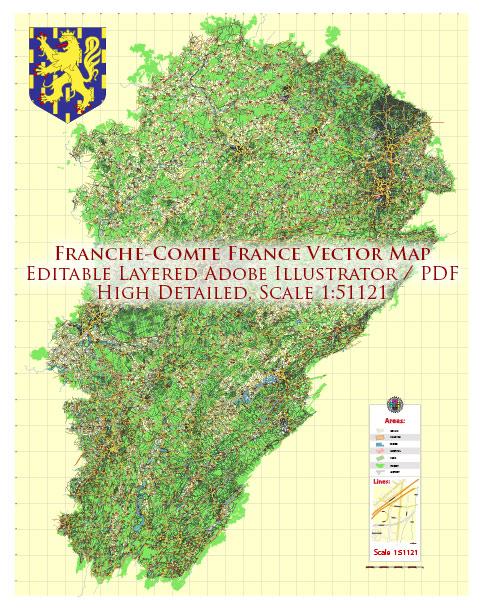Franche-Comté is a historic region in eastern France known for its rich cultural heritage and beautiful natural landscapes. While the region no longer exists as an administrative entity since it was merged into the Bourgogne-Franche-Comté region in 2016, it’s still useful to provide a socio-economic description of the area.
- Geography and Demographics: Franche-Comté was situated in the eastern part of France and was characterized by a diverse landscape, including the Jura Mountains and picturesque countryside. The region had a relatively small population compared to other French regions.
- Economy: The economy of Franche-Comté was traditionally based on several key sectors:
- Agriculture: Agriculture played a significant role in the regional economy, with dairy farming being particularly important. The region was known for producing high-quality cheeses, such as Comté and Morbier.
- Watchmaking: The region was historically famous for its watchmaking industry, particularly in cities like Besançon. Luxury watch brands like Pequignet, Lip, and others were founded in this region.
- Manufacturing: Franche-Comté had a strong tradition of manufacturing, including the production of precision instruments, machinery, and various industrial products.
- Employment: Employment in the region was largely concentrated in traditional sectors like agriculture, manufacturing, and watchmaking. However, like many regions, there was a trend towards diversification and growth in service industries and tourism.
- Education: Franche-Comté had a number of educational institutions, including the University of Franche-Comté in Besançon. The region had a strong focus on education and research.
- Tourism: The region’s beautiful natural landscapes, historical sites, and cultural heritage made it a popular tourist destination. Visitors were drawn to the Jura Mountains, which offered opportunities for hiking, skiing, and outdoor activities. The historic city of Besançon and its UNESCO-listed citadel were also major attractions.
- Transportation: Franche-Comté was well-connected by road and rail, making it accessible for both tourists and businesses. The A36 motorway and the TGV high-speed train network provided transportation links to major French cities and neighboring countries.
- Culture: Franche-Comté had a rich cultural heritage with influences from both French and Swiss traditions. The region celebrated its local culinary specialties, including its renowned cheeses and wines.
It’s important to note that the socio-economic landscape of this region may have evolved since the administrative changes in 2016, with regional development initiatives and economic shifts impacting the area. The merger of Franche-Comté with Bourgogne into the Bourgogne-Franche-Comté region was intended to streamline administrative functions and improve efficiency, which could also have influenced the socio-economic dynamics of the area.


 Author: Kirill Shrayber, Ph.D.
Author: Kirill Shrayber, Ph.D.